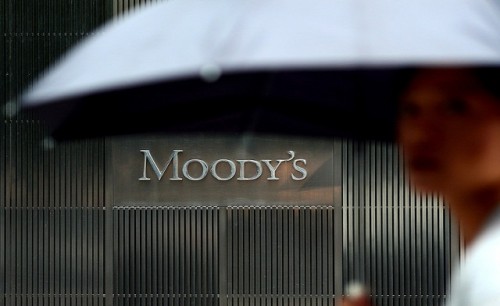Moody’s Maintains Negative Outlook on Bahrain’s Banking System

2017-06-02 - 10:28 p
Bahrain Mirror: Moody's agency said it maintains negative outlook on Bahrain, which reflects the challenges posed by weakening economic growth, the sector's exposure to government debt and the authorities' lower capacity to support banks.
Moody's in a recent report conveyed that it expects Bahrain's growth to slow on the back of low oil prices, stagnant hydrocarbon output and reduced government spending. Economic growth is forecast to decline to around 2.0 per cent in 2017-18 from 3.1 per cent in 2016., CPI Financial reported.
Growth in Bahrain's relatively diversified non-oil economy will also slow to 2.5 per cent in 2017-18, from a strong 3.7 per cent in 2016. Overall lending, which was flat in 2016, is expected to expand by 3 per cent in the next 12 to 18 months, supported by infrastructure projects.
"The outlook for Bahrain's banking system over the next 12 to 18 months is negative, as it has been since 2015. The operating environment for Bahraini banks will soften, driven by lower economic growth and increased sovereign debt issuance, as low oil prices sustain large fiscal deficits, leading to an increase in banks' holdings of government bonds," said Christos Theofilou, a Moody's Assistant Vice President-Analyst.
The rating agency expects modest pressure on asset quality over the outlook period, with problem loans rising to around 7.0 per cent of gross loans from the already weak 6.3 per cent at the end of 2016.
The anticipated increase in new problem loan formation reflects a moderate increase in pressure on domestic companies and households as a result of the slowdown in economic growth-with reduced government spending and fiscal consolidation measures-and higher interest rates.
This will be partly offset by the banks' efforts to recover and write off legacy problem loans in sectors that are showing signs of recovery, such as construction and real estate.
Net profitability will remain strong, but decline slightly to 1.4 per cent of average assets in 2017, reflecting higher provisioning charges.
Nevertheless, Moody's also considers that the banks' strong liquidity and capital buffers will continue to provide financial stability.
- 2023-11-25S&P Revises Bahrain's Outlook to "Stable" on Fiscal Deficit Worries
- 2023-07-13Haj Sumoud Transferred from Dry Dock Prison to Al-Salmaniya Emergency Department after His Health Deteriorated
- 2023-06-22Bahraini Mumtalakat Buys Saudi McLaren's Stake
- 2023-05-18After Allocating $5 Billion Investment Fund, Is Bahrain Waiting New Saudi Support?
- 2022-09-21Abu Sa'afa Field Revenues Reach One Billion, 33 Million BD, Its Revenues Expected to Increase by 40% this Year